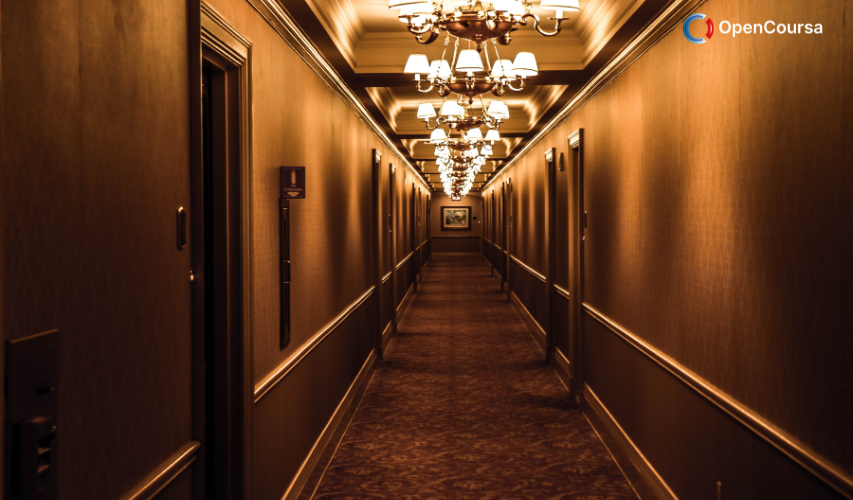Home » Course Layouts » Free Course Layout Udemy
Employers have duties concerning the provision and use of personal protective equipment (PPE) at work. PPE is equipment that will protect the user against health or safety risks at work. It can include items such as safety helmets, gloves, eye protection, high-visibility clothing, safety footwear and safety harnesses. It also includes respiratory protective equipment (RPE).
0
59
English
English [CC]
- Learn basic syntax that can apply to any language.
- Learn what is a programming language and the basic concepts for beginners.
- Understand what is Javascript in it's truest form.
- Know the basic syntax of Javascript.
- Know some hidden quirks in Javascript.
Description
Why is PPE important?
Making the workplace safe includes providing instructions, procedures, training and supervision to encourage people to work safely and responsibly. Even where engineering controls and safe systems of work have been applied, some hazards might remain. These include injuries to:- the lungs, eg from breathing in contaminated air
- the head and feet, eg from falling materials
- the eyes, eg from flying particles or splashes of corrosive liquids
- the skin, eg from contact with corrosive materials
- the body, eg from extremes of heat or cold
What do I have to do?
- Only use PPE as a last resort
- If PPE is still needed after implementing other controls (and there will be circumstances when it is, eg head protection on most construction sites), you must provide this for your employees free of charge
- You must choose the equipment carefully (see selection details below) and ensure employees are trained to use it properly and know how to detect and report any faults
Selection and use
You should ask yourself the following questions:- Who is exposed and to what?
- How long are they exposed?
- How much are they exposed to?
- Choose products which are CE marked in accordance with the Personal Protective Equipment Regulations 2002 – suppliers can advise you
- Choose equipment that suits the user – consider the size, fit and weight of the PPE. If the users help choose it, they will be more likely to use it
- If more than one item of PPE is worn at the same time, make sure they can be used together, eg wearing safety glasses may disturb the seal of a respirator, causing air leaks
- Instruct and train people on how to use it, eg train people to remove gloves without contaminating their skin. Tell them why it is needed, when to use it and what its limitations are
Other advice on PPE
- Never allow exemptions from wearing PPE for those jobs that ‘only take a few minutes'
- Check with your supplier on what PPE is appropriate – explain the job to them
- If in doubt, seek further advice from a specialist adviser
Maintenance
PPE must be properly looked after and stored when not in use, eg in a dry, clean cupboard. If it is reusable it must be cleaned and kept in good condition. Think about:- using the right replacement parts which match the original, eg respirator filters
- keeping replacement PPE available
- who is responsible for maintenance and how it is to be done
- having a supply of appropriate disposable suits which are useful for dirty jobs where laundry costs are high, eg for visitors who need protective clothing
Monitor and review
- Check regularly that PPE is used. If it isn’t, find out why not
- Safety signs can be a useful reminder that PPE should be worn
- Take note of any changes in equipment, materials and methods – you may need to update what you provide
Course content
-
- PPE 00:25:00
- Types of PPE 00:20:00
- Regulations 00:10:00
- Assessing the Hazards 00:10:00
-
- Regulation Requirements 00:10:00
- Assessing Suitable PPE 00:40:00
- Protection 01:00:00
- Can I be charged for PPE 00:20:00
- Training 00:40:00
- Maintenance 00:20:00
- Importance Of Health And Safety In The Workplace FREE 00:10:00
- Basic Health & Safety at Workplace Video FREE 00:20:00
- PPE ToolBox Talk Training Test 00:45:00
N.A
- 5 stars0
- 4 stars0
- 3 stars0
- 2 stars0
- 1 stars0
No Reviews found for this course.
Instructor
OpenCoursa
Accessible Education for Everyone
5
5
6
24760
4637
We are an educational and skills marketplace to accommodate the needs of skills enhancement and free equal education across the globe to the millions. We are bringing courses and trainings every single day for our users. We welcome everyone woth all ages, all background to learn. There is so much available to learn and deliver to the people.
Explore Free Courses
Access valuable knowledge without any cost.
{"title":"","show_title":"0","post_type":"course","taxonomy":"course-cat","term":"engineering-skills,health-and-safety","post_ids":"","course_style":"free","featured_style":"course6","masonry":"","grid_columns":"clear4 col-md-3","column_width":"268","gutter":"30","grid_number":"4","infinite":"","pagination":"","grid_excerpt_length":"20","grid_link":"1","grid_search":"0","course_type":"","css_class":"","container_css":"","custom_css":""}










